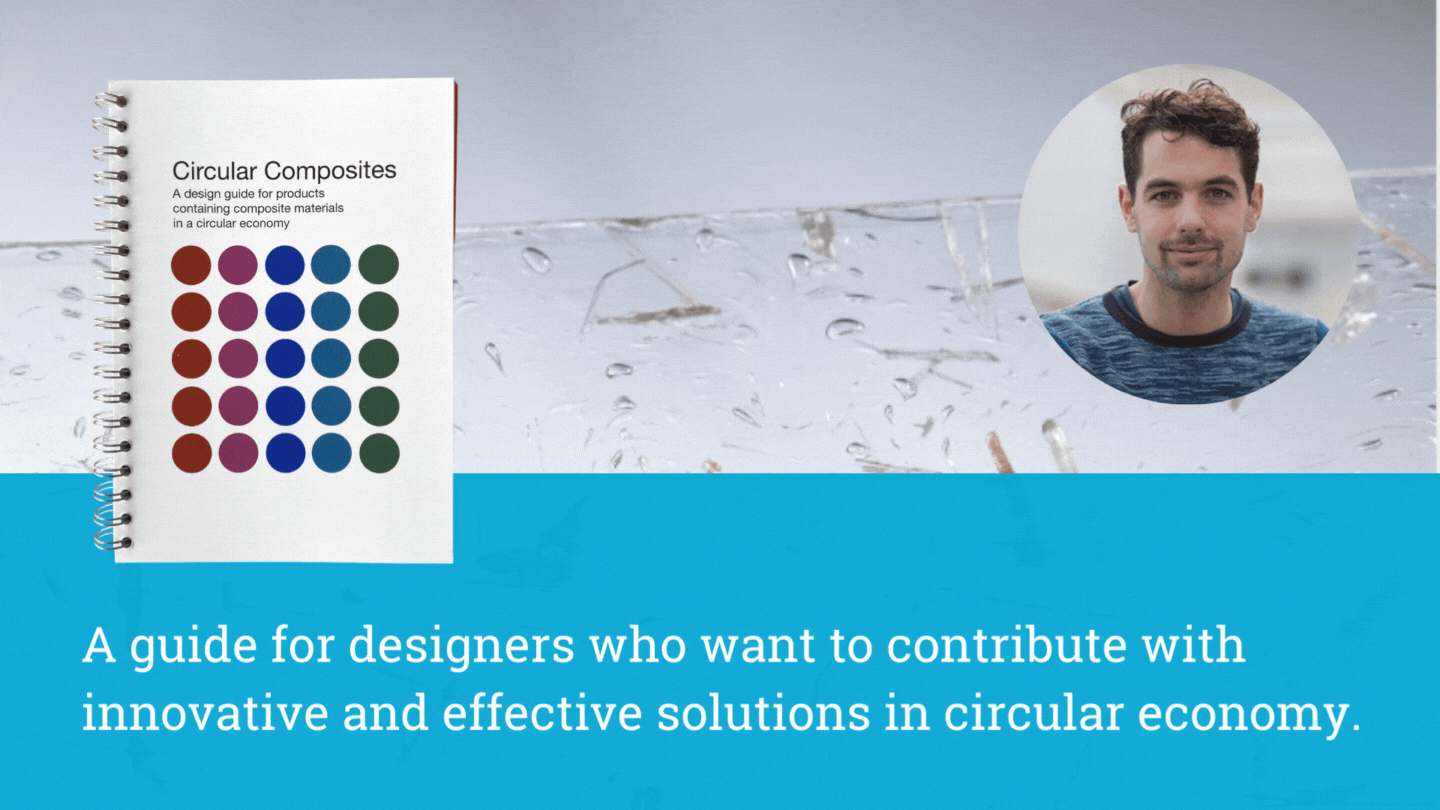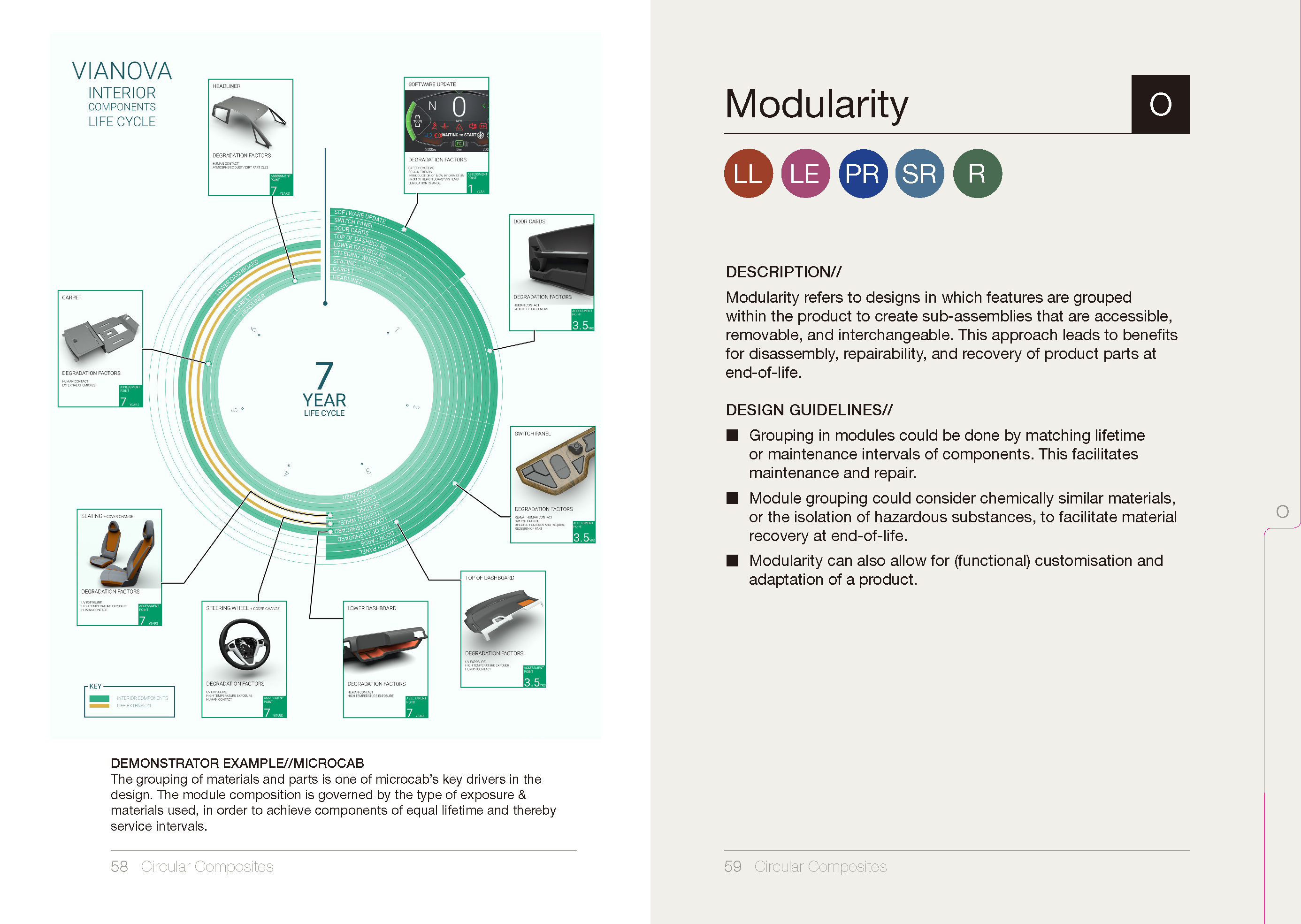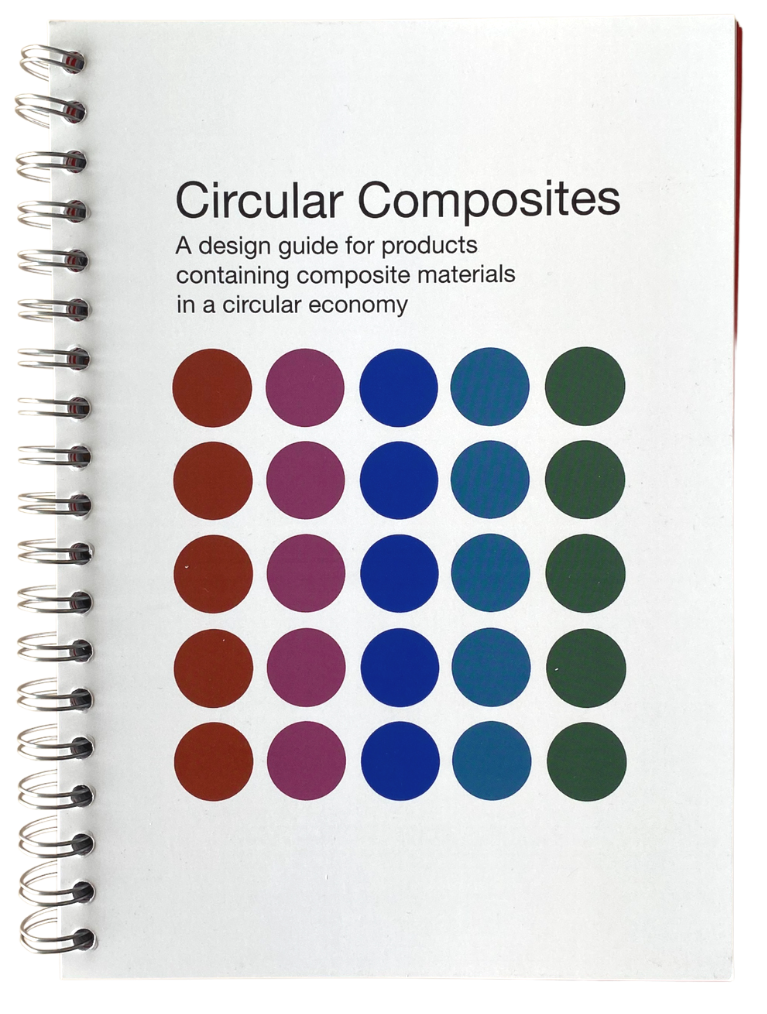Circular Composites Design Guide
A design guide for products containing composite materials in a circular economy
As society, industry, and education move towards a more sustainability-focused future, it is becoming more common and more necessary for designers to implement strategies that embrace circularity. Inspired by this understanding, circular design, his interest in composite materials, and a desire to help other designers, IDE researcher Jelle Joustra has published Circular Composites: A design guide for products containing composite materials in a circular economy.
Joustra created his design guide in a bid to make his research more accessible to designers, students, and professionals alike. It is a starting point for anyone interested in creating a more sustainable future through the use of innovative, effective, and practical design solutions.
Circular recovery strategies, ranging from reuse to repurposing and recycling, are connected to the design process and concrete design approaches. By providing clear design guidelines and illustrative examples in a structured way, I hope to inspire and guide designers in developing new products for a circular economy.
Jelle Joustra, IDE researcher
The rise of composite materials
Modern-day composites can be found everywhere and are now a crucial component in almost every sector, including automotive, construction, and aviation. By simply looking around, you will likely see a dozen examples of products that use composite materials. They are in everything from car dashboards to sports equipment to wind turbine blades!
The ability of composite materials to be fine-tuned to achieve desired functionalities within various applications has resulted in lightweight structures that are not only stronger, but also use fewer materials and consumer less energy. But if this is the case, then why is there an urgent need for design strategies that take circular composite materials into consideration?
Design, composites, and circularity
Composite materials are complicated and complex. They present many opportunities and many challenges, which is what drew IDE researcher Jelle Joustra to them in the first place.
Despite being advantageous in many ways, composites still have a long way to go if they are to support a circular economy. Because while their material properties can be fine-tuned to create optimised solutions and efficient use of resources, recycling composite materials is still challenging. Joustra believes, however, that design can be the missing link to turn this perspective around.
Design strategies for composite products
Joustra’s book, Circular Composites, acts as an entry point into the process of (re)designing composite products for a circular economy. By providing clear design guidelines and illustrative examples, Joustra’s book ensures that the information is accessible and applicable to designers.
“From a distance, the concept of the circular economy and turning it into a feasible design can be daunting. But by reading this book and following the methods, you’ll see how it can work in your design cases.” says Joustra. “I present the knowledge that is needed for circular design; methods that can be implemented in the design process; tools to explore the product life cycle, generate appropriate design solutions, and communicate with stakeholders.” The guide also contains numerous examples of how the book’s design method has been utilised in case studies.
Circular Composites design method in practice
The Circular Composites design method, as detailed in this guide, was successfully used during master classes at IDE. The classes saw industry professionals and TU Delft students collaborating on real products. They used the Circular Composites design method to explore the product life cycle, select circular strategies, and incorporate suggested design aspects to realise circular product designs. You can delve into these case studies within the guide.
I want to invite more designers onto the circular path and let them know they can use their skills to realise the circular economy. I want to bridge the gap between the circular economy’s ideas and principles with the solutions that design can offer.
Jelle Joustra, TU Delft | Faculty of Industrial Design Engineering researcher
Project ECOBULK
The book also highlights case studies from Project ECOBULK. Joustra, alongside researchers and organisations from across Europe, worked on this project for four years. Project ECOBULK was a part of the European Union’s Horizon 2020 project. To learn more about this project click here.
This book guides designers by proposing circular recovery strategies and concrete design approaches, illustrated with examples from industry. It translates academic insights in actionable principles for designers in practice.
Ruud Balkenende, Professor of Circular Product Design at TU Delft

About the author
Having completed both his BSc in Industrial Design Engineering and MSc in Integrated Product Design at IDE, Jelle Joustra is now a PhD candidate at the TU Delft | Faculty of Industrial Design Engineering. His passion for circular product design has inspired his PhD research, this book, and the various projects he has worked on.

Get your hands on a copy
Joustra’s book, Circular Composites: A design guide for products containing composite materials in a circular economy, is now available via TU Delft Open. The book is accessible as a free-to-download PDF or as a print-on-demand book. For more information, visit this link.
This book was published by TU Delft Open Publishing. This book was researched and written by Jelle Joustra, with assistance from IDE PhD candidate Riel Bessai. Bessai assisted Joustra in the design and formatting of this guide.
Jelle Joustra
- +31 (0)15 27 89048
- j.j.joustra@tudelft.nl
- Personal website
-
Room 32-B-3-290
Present on: Mon-Tue-Wed-Thu-Fri





